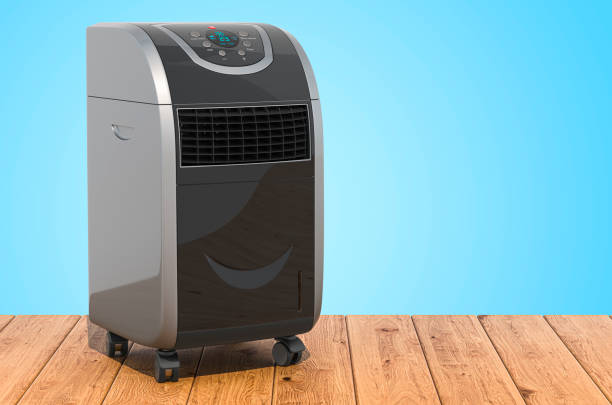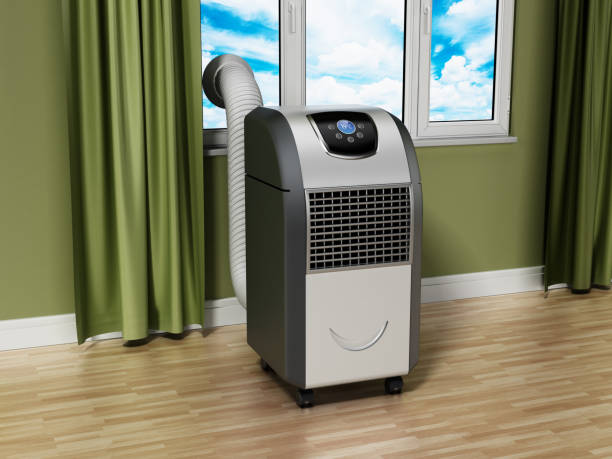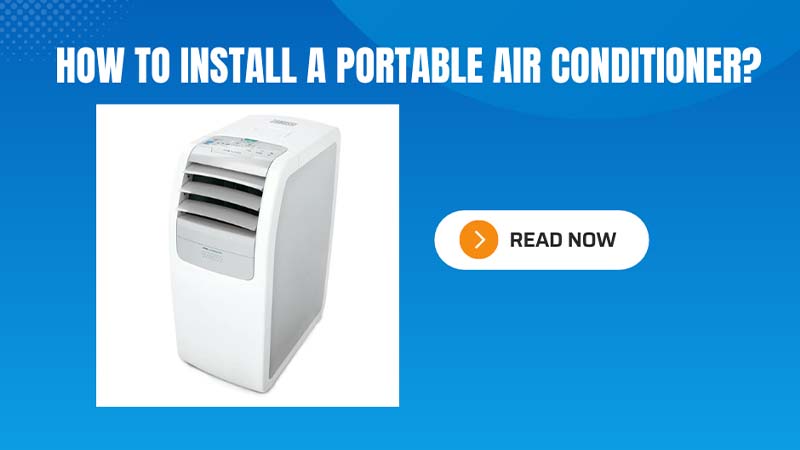We’ll go over how to install a portable air conditioner and how to make the most of it once you have it.
Let’s quickly look at the basic steps:
- Check That Everything is There
- The Refrigerant in the Unit Needs to Settle
- The Hose
- The Window Slider
- Finish the Exhaust Point
- Get the Machine Running
Please read on for more detailed information.
How to Install a Portable Air Conditioner?
Below are the six cool steps on how to install a portable air conditioner:
Check That Everything is There
Making an inventory is the most crucial step for any homeowner to take when figuring out how to install a portable air conditioner. This entails going through each item in the box to determine what is missing. Additionally, it entails verifying that the components are in functional order. The window slider, hose, screws, and remote are important components.
The Refrigerant in the Unit Needs to Settle
This crucial step—which many people might overlook—requires the refrigerant in the unit to settle. For these machines to effectively cool the air, refrigerant is a necessary component. Prior to working, it must first find the proper location to settle. You can do this by leaving the device upright for a while.
The Hose
With these mobile machines, the hose is an essential piece of equipment. There ought to be a number of connectors that can be connected to the hose. With some simple rotation into position, this ought to produce an airtight seal. A functional exhaust requires that seal to be examined. The tabs on the connector should then fit over the corresponding tabs on the air conditioner.
The Window Slider
This exhaust sends the air outside and away from the house and its occupants. There must therefore be a window exit. With screws holding it in place, the window slider slides over the inside rim. Once more, a tight seal is required, so the kits’ adjustable widths were included.
Finish the Exhaust Point
The air conditioner must then be placed near the window so that users can attach the other end of the hose to the window kit. This produces the ideal seal and exhaust system from the machine to the outside of the building.
Get the Machine Running
The portable air conditioner must then be turned on in order to ensure that everything is functioning properly. Any issues with the settings, mechanics, or hose seals should be brought to light by a straightforward cycle. With a few resets, this might take some time. The installation process is finished once it is finished without any issues.

How Do Portable Air Conditioners Work?
It’s a good idea to quickly review how any piece of equipment operates before setting it up; this will help you catch problems during installation that you might otherwise overlook.
Your room’s air will be drawn in by a portable air conditioner, which will then circulate it over coils to remove heat. While the heat is exhausted through the ventilation tube of a nearby window (or door), the cooled air is blown back into the space. A ventilation hose run should be as short as possible because a longer run will result in more surface area reflecting heat back into the room rather than venting it outside.
Condensation is produced during the cooling process and is either forced out through a hose that needs to be connected to a nearby drain or collected inside the cooling unit itself, in a reservoir that needs to be emptied.
When the condensation in the portable air conditioner’s reservoir needs to be emptied, it will probably let you know and frequently turn off to prevent an overflow. Contrary to popular belief, this is not always the case; confirm this by consulting your manual. If your particular model lacks this feature or if you’ve attached its drainage hose to a bucket or other container, it’s crucial that you empty these containers frequently to prevent them from overflowing.
Read about
Why Choose a Portable Air Conditioner?
Portable air conditioners are popular alternatives to traditional window units because they can be moved room to room easily (often with less heavy lifting), are much easier to install, and don’t run afoul of any rules prohibiting objects that protrude from your windows or homeowner’s association regulations. Additionally, many window designs make it impossible to install a window unit, at least not without doing some serious DIY to make sure the unit stays stable, in place, and adequately insulated.
What You Need:
- Portable air conditioner
- Duct tapeor your sealant of choice
- Bucket or other container (if applicable)
- Plexiglass panel(optional)
Prep Time Needed: 10 minutes
Total Time Needed: 30–90 minutes
Difficulty: Easy

How to Make a Portable Air Conditioner More Efficient?
- A minimum distance of 50 cm should be left between the portable air conditioner and the wall to ensure adequate air circulation.
- Set the air conditioner down on a level, even surface. On an uneven surface, a portable air conditioner might be noisier than usual.
- Put nothing close to or on top of the unit.
- Regularly, at least once every two weeks, clean the filter.
If Your Portable Air Con Isn’t Cooling as Well as It Should…
- Clean any filters, as well as the intake and output vents of the portable air conditioner; blocked vents will reduce cooling efficiency.
- Is the unit appropriate for the size of the space? You might have to use these portable devices in smaller rooms instead of larger ones since they aren’t ideal for those spaces.
- Are draughts and gaps in the room you’re trying to cool letting all the cold air out? Close all doors, properly seal the vent to prevent hot air from leaking in, and draw the curtains to block the sun.
- In order to feel the cooling effect of the portable air conditioner on a particularly hot day, you might need to sit closer to the device.
- To circulate the room’s cooler air from the portable air conditioner, use a ceiling fan.
So, How to Install a Portable Air Conditioner?
Because they are quick and simple to install and can be moved from room to room, portable air conditioners are a practical substitute for window-mounted air conditioners. Utilizing refrigerants to cool warm room air and a hose to exhaust hot air produced as a byproduct, portable air conditioners work by cooling warm room air. You must make sure that this hot air is successfully vented out of the room, preferably through a window to the outside, in order for your air conditioner to function.
Here’s how to install a portable air conditioner:
- Check That Everything is There
- The Refrigerant in the Unit Needs to Settle
- The Hose
- The Window Slider
- Finish the Exhaust Point
- Get the Machine Running
Thank you for reading.



